DCS stands for Distributed Control System and PLC stands for Programmable Logic Controller. Do you know the Difference between DCS and PLC Systems ?
Difference between DCS & PLC Systems
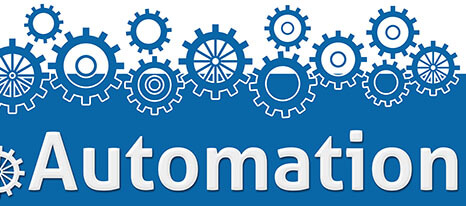
DCS stands for “Distributed Control System”
DCS’s were designed to control processes, not discrete operations. As such, a large number of the inputs and outputs are analog like a 4-20mA signal or 0-10V signal.
In Literary meaning, a Distributed Control System (DCS) refers to a control system usually of a process or manufacturing system, in which the controller elements are not central in location (like the brain) but are distributed throughout the system with each component sub-system controlled by one or more controllers. Process plants used to have long series of panel mounted Single Loop Controllers (Analog/PID controllers).
PLC stands for “Programmable Logic Controller”
Historically a PLC was in discrete control of manufacturing processes. Whole discrete logic used to be implemented with relay circuitry. Most of the inputs and outputs for discrete control are binary, meaning they have only two states: On and Off.
What are attributes and characteristics which differentiate the PLC system from the DCS. There have been claims and counter claims from different manufacturers that their system is DCS or PLC.
The topic has remained under debate for long, and especially today when we have already entered into new era of Hybrid Distributed Control Systems, it has become increasingly difficult to select and differentiate the advantages and drawbacks one can get from different systems.
There are few similarities and dissimilarities which I would like to mention here:
1) DCS are designed or made available to the user in a way that only configuration in form of a Functional Block has to be carried out unlike PLC, where complete programming has to be implemented using any one of the different languages available in the system. Now, Functional Blocks are also available in the PLC systems, which really makes it comparable to DCS.
2) When DCS started emerging in the market, idea was to supply DCS with whole bunch of hardware and software packages including for Human Interface, necessary for the complete automation of the plant, thus facilitating Single Point Configuration in terms of database and communication possible in general.
Additionally, Human Interface does not need separate communication package i.e DDE server, to communicate with the controller. DCS includes higher levels of application software for regulatory and batch control.
In case of PLC systems, PLC were not suppose to be in packages but competition with DCS vendors forced the PLC manufacturers to offer necessary all other softwares and packages.
3) Many DCS are designed such that it is possible to configure cycle time for each Functional Block. Thus DCS system takes care of cycle time scheduling of the Functional Blocks which are the basic execution units.
This is one of the reason that overall scan time of the DCS is comparatively higher than the PLC system.This functionality has been introduced in PLC systems(s) in some form as well.
4) A DCS has inherently multiple processor capability thus making the functionality distributed across a network.
In a typical multi-processors (multi-node) DCS architecture, Engineer has to put in less efforts for inter-communication of the processors or one controller can easily access the Tag(s) from the database of the other .i.e the input of FB in one controller can be output of FB of the other controller. This is possible now in PLC but more efforts have to be put in.
5) DCS programming is centered around configuration of Functional Blocks and discrete logic is implemented in DCS using FBs, thus making the DCS inherently an analog control system (although ladder programming is also possible in some of the DCS also).
PLCs were programmed using Ladder/Relay language , before arrival of IEC 1131-3 standard and Analog control was incorporated inside Ladder inside Ladder Logic using special FBs. This is probably the reason we look at some of the process plants that process (Analog) control is done by the DCS, while emergency control (Discrete Control) is implemented by PLC based systems.
6) PLCs are still being used at RTU stations because of their simple, small and cheaper architecture as well as engineering (typically the RTU application) instead of big DCS.
DCS have been used as the central system in a SCADA network. In a typical SCADA scenario, one DCS is connected to many PLCs systems.
7) Being Discrete in nature, PLC was natural choice of manufacturer and end-user to apply it for safety system. This led to production of specialized safety system conforming to SIL3 certification in accordance with ANSI / ISA 84.00.01-2004.
Today, a lot has changed, it is difficult to distinguish between two systems in terms of its main features. Differences between the two has virtually vanished due to Programming / Configuration language standard IEC-61131.
The functionality of the PLC has evolved over the years to include sequential relay control, motion control, process control, distributed control systems and networking.
However, in major industrial areas and structure markets, it is practice to deploy DCS for process control and PLC based system for safety control.
Perhaps, for a large install base like more than 1000 I/Os system, cost of installation, addition and maintenance per I/O is less in case of DCS system.
Now, more important is cost, application, system integrity, reliability, maintainability, historical logging / intelligent statistics and learning / training. How much support is available from the vendor for the operation matters most to the operator now.
This has resulted into ‘Solutions Packages’ by vendors to their customers instead of simply offering individual products. It is DCS or PLC, must come in a solution package.
More and improved System functionalities have made these system more complex which require strong integration between the operator /user and the manufacturer.
Also Read : Differences of DCS, PLC or RTU
Few vendors also introduced Hybrid DCS / PLC system or transformed their PLC based system into DCS by incorporating similar features.
DCS vendors have now introduced packages for Asset Optimization and management which seamlessly integrate with their systems. is it difficult to say which system to select ? It varies from user to user as discussed above. The End-User who has to have all knowledge and courage to take responsibility of his system in totality.
DCS vs. PLC
DCS stands for Distributed Control System. A DCS typically covers an entire process, and is capable of covering an entire plant.
A DCS combines one or more PLCs with an HMI, and allows the integrator to build both together. The project is often developed with the entire DCS in mind so that all aspects of the system are developed together – instead of developing the PLC first, then the HMI, followed by alarms, historian, etc.
A DCS takes the PLC/HMI combo and combines several other features into an integrated package:
- Servers and clients. The servers gather tag data from the PLC(s), contain the graphics, and serve both out to clients for operators to use.
- Redundant servers, controllers and/or networks.
- Synchronized alarming and security.
- Historical data logging and trending.
- Batch management.
What Are The Benefits of Each?
Now, onto the other major differences between the two. I’d like to preface this section by saying that there are always going to be exceptions. These are general differences and advantages, and are not meant to be exclusionary.
What Are the Benefits of a PLC/HMI Combo?
The biggest benefit I’ve seen to a PLC is that it is easier for plant personnel to implement and configure internally than a DCS.
There are many technicians and engineers that have experience with ladder logic, and if you have one or more on your staff, you may decide to take care of your processes in-house.
Also, if the PLC will be controlling a machine that requires very fast response times, a PLC is the best choice. A DCS controller can have a fast response time, but that’s not what it’s intended for.
Furthermore, purchasing a PLC allows you to buy only the software with the features you need. If you have a simple application or a standalone skid system, a PLC (with a small HMI) might be all you need. If you were to buy a DCS, you might shell out a lot of money for features you don’t need.
Finally, in a pinch, a PLC can be installed, programmed and ready to go very quickly.
PLCs are often used in:
- Machine automation (quicker processing time).
- Skids, stand-alone systems (doesn’t need to be part of plant-wide system, or is developed by an OEM).
- Utilities (lower in cost).
What Are The Benefits of a DCS?
In addition to combining one or more PLCs with one or more HMIs, a DCS offers:
- High availability via:
- Controllers Redundant
- operator system servers Redundant
- Redundant networks.
- Server-client relationships.
- Reduced engineering time.
- Shorter start-ups.
- Minimal troubleshooting of included features.
- Controller code built with entire system in mind. Code includes settings for:
- HMI graphics and faceplates.
- Historical data and trending.
- Alarms.
- Operator features and security.
- Lends itself to better organization and consistency than a PLC/HMI combo.
- Easily integrated with:
- Batch management.
- Process Historian.
- OPC server.
PLC vs. DCS: Which is Right for Your Operation?
Over the past decade, the functionality of different control systems has been merging.
Programmable logic controllers (PLCs) now have capabilities once found only in distributed control systems (DCSs), while a DCS can handle many functions previously thought more appropriate for PLCs.
So what’s the difference between the two control approaches, where’s the dividing line and are there still reasons to choose one over the other?
PLCs grew up as replacements for multiple relays and are used primarily for controlling discrete manufacturing processes and standalone equipment. If integration with other equipment is required, the user or his system integrator typically has to do it, connecting human-machine interfaces (HMIs) and other control devices as needed.
The DCS, on the other hand, was developed to replace PID controllers and is found most often in batch and continuous production processes, especially those that require advanced control measures. The vendor handles system integration, and HMIs are integral.
As users demanded more production information, PLCs gained processing power and networking became common. PLC-based control systems began to function like a mini-DCS.
At the same time, the DCS hybridized to incorporate PLCs and PCs to control certain functions and to provide reporting services. The DCS supervises the entire process, much like the conductor in an orchestra. Protocols, like OPC, have eased interactions between the two control systems.
Also Read : DCS Architecture Vs PLC Architecture
Since PLCs are less expensive and can now perform much like a DCS, wouldn’t it make sense to convert everything to PLCs? The answer, like most things in the world of automation, is that it depends on the needs of your application. Here are six key factors to consider:
1. Response time
PLCs are fast, no doubt about it. Response times of one-tenth of a second make the PLC an ideal controller for near real-time actions such as a safety shutdown or firing control.
A DCS takes much longer to process data, so it’s not the right solution when response times are critical. In fact, safety systems require a separate controller.
2. Scalability
A PLC can only handle a few thousand I/O points or less. It’s just not as scalable as a DCS, which can handle many thousands of I/O points and more easily accommodate new equipment, process enhancements and data integration.
If you require advanced process control, and have a large facility or a process that’s spread out over a wide geographic area with thousands of I/O points, a DCS makes more sense.
3. Redundancy
Another problem with PLCs is redundancy. If you need power or fault tolerant I/O, don’t try to force those requirements into a PLC-based control system. You’ll just end up raising the costs to equal or exceed those of a DCS.
4. Complexity
The complex nature of many continuous production processes, such as oil and gas, water treatment and chemical processing, continue to require the advanced process control capabilities of the DCS.
Others, such as pulp and paper, are trending toward PLC-based control.
5. Frequent process changes
PLCs are best applied to a dedicated process that doesn’t change often. If your process is complex and requires frequent adjustments or must aggregate and analyze a large amount of data, a DCS is typically the better solution.
Of course, the very flexibility of a DCS system also makes it much more vulnerable to “meddling” by operators that can cause spurious shutdowns.
6. Vendor support
DCS vendors typically require users to employ them to provide integration services and implement process changes.
System integrators perform similar functions for PLC-based systems. It has also become common for PLC vendors to offer support services through their network of system integrator partners.
Process control has become increasing complex. It’s difficult for any individual to know everything about these sophisticated systems, increasing the need for vendor support.
Manufacturers also continue to reduce factory staff and a generation of experienced process control personnel has begun to retire. As a result, the quality of support has become a critical factor in vendor selection.
So, How Do I Choose Which One I Need?
What’s the long term plan for the facility? If you have any intent of tying it all together into a DCS, and the process you’re currently looking at has a part in it, there’s no time like the present to start your DCS migration.
Is the process a stand-alone, supporting or skid system? If so, a PLC and HMI could be all you need, and if you decide to migrate the rest of the plant to a DCS in the future, this system could stay a PLC/HMI combo.
Do you want to configure, build and commission the system yourself? If so, and you don’t have formal DCS training, you should put in a PLC and HMI combo. Most DCS packages are so complex that they require formal training, and without it, you could get into trouble.
Do you need a high availability system? What if the controller dies, or your HMI goes down? You might need redundancy for your controllers and/or OS (operator system) servers. If so, consider a DCS.
Are you going to need a historian, multiple clients, a trend package, batch system, and other DCS features? Granted, there are HMI packages that provide all these features, but keep in mind that a DCS provides them as well.
Is it a large system that you will have an integrator build and commission? If so, I strongly recommend a DCS. It will save you time and money in the long run.
Also Read: Basics of Alarms & Trips in Process Control
If you liked this article, then please subscribe to our YouTube Channel for PLC and SCADA video tutorials.
You can also follow us on Facebook and Twitter to receive daily updates.
Read Next:
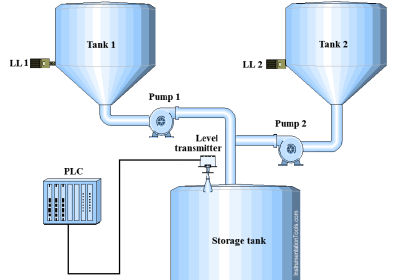
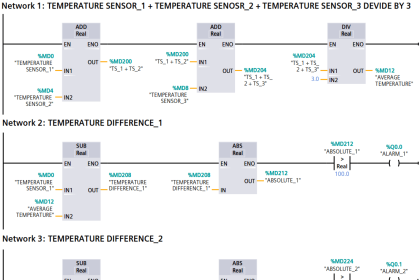
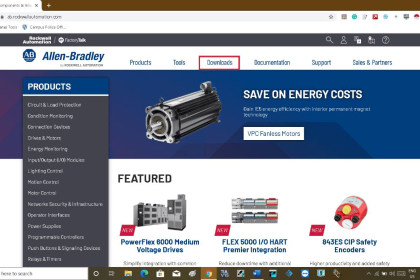
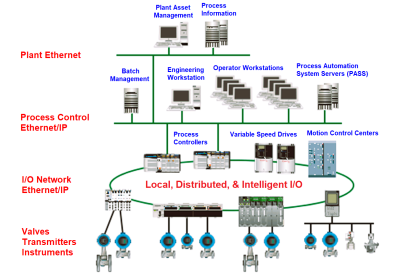
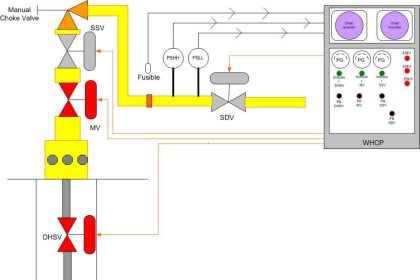
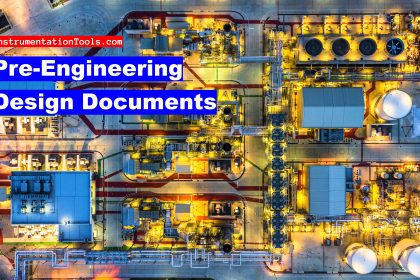
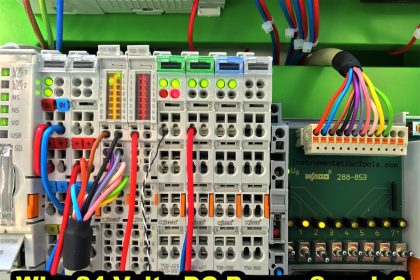
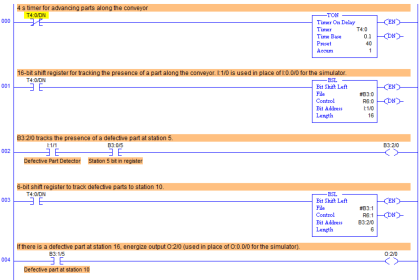
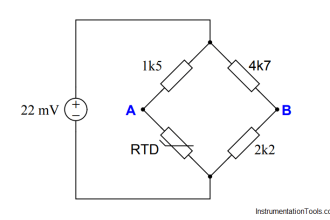
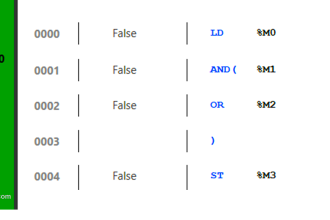



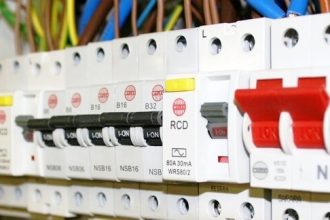



Extremely Knowledgeable Article.
Finally i understand the difference between PLC & DCS systems. Thank You.
Really awesome explanation. It clears my concept
I understand the difference between DCS & PLC
Thanks you
really Helpul thankyou for sharing
Awesome explanation
Thank you, excellent explanation!
Really helpful. Nice work
awesome explanation
thanks every helpful for me to understand about DCS and PLC
Very nicely explained the basic concepts